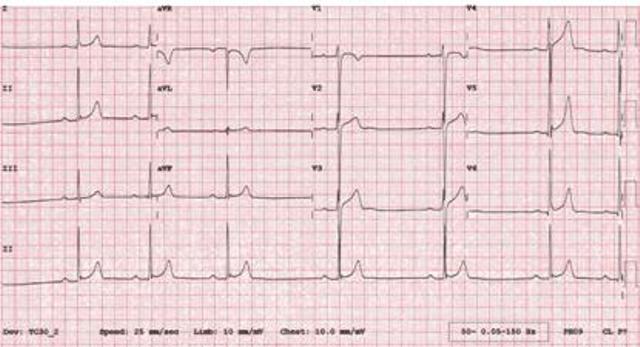The case
Description
- A 32 year-old, male, Caucasian professional cyclist attended for routine pre-participation screening as mandated by the Union Cycliste International (UCI).
- He was asymptomatic and had no family history of sudden death or of cardiac pathology.
- He trained for 30 hours per week.
His 12 lead ECG is shown below:

Test your knowledge
Interested in learning more?
Access the ESC e-learning platform and discover the EAPC Sports Cardiology online courses.
Not yet an EAPC member?
Note: The views and opinions expressed on this page are those of the author and may not be accepted by others. While every attempt is made to keep the information up to date, there is always going to be a lag in updating information. The reader is encouraged to read this in conjunction with appropriate ESC Guidelines. The material on this page is for educational purposes and is not for use as a definitive management strategy in the care of patients. Quiz material in the site are only examples and do not guarantee outcomes from formal examinations.





 Our mission: To reduce the burden of cardiovascular disease.
Our mission: To reduce the burden of cardiovascular disease.